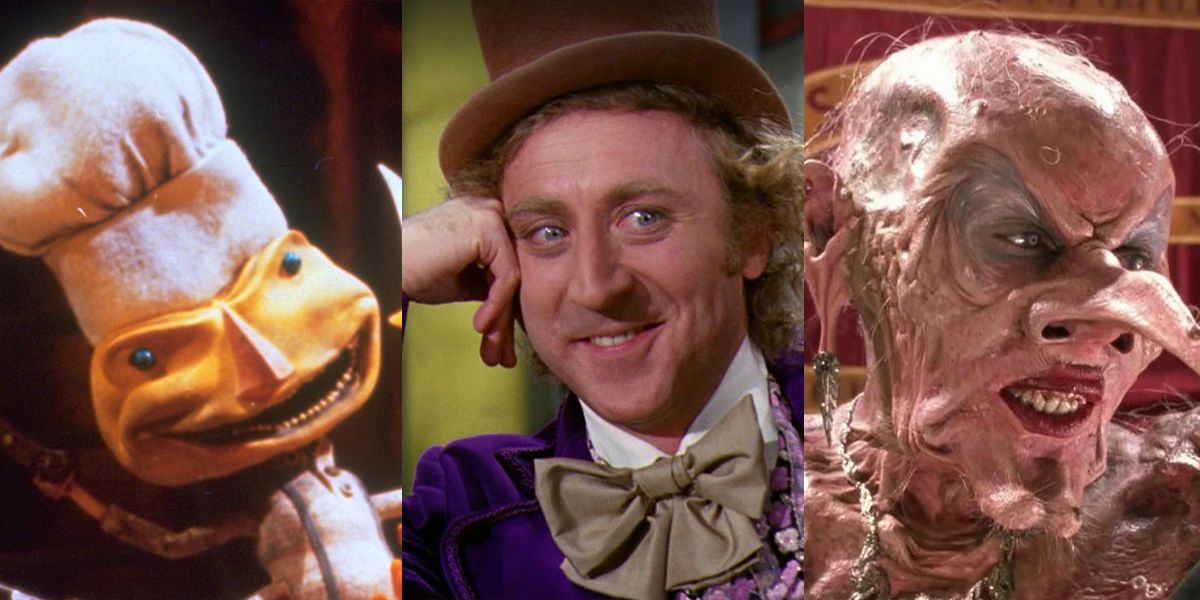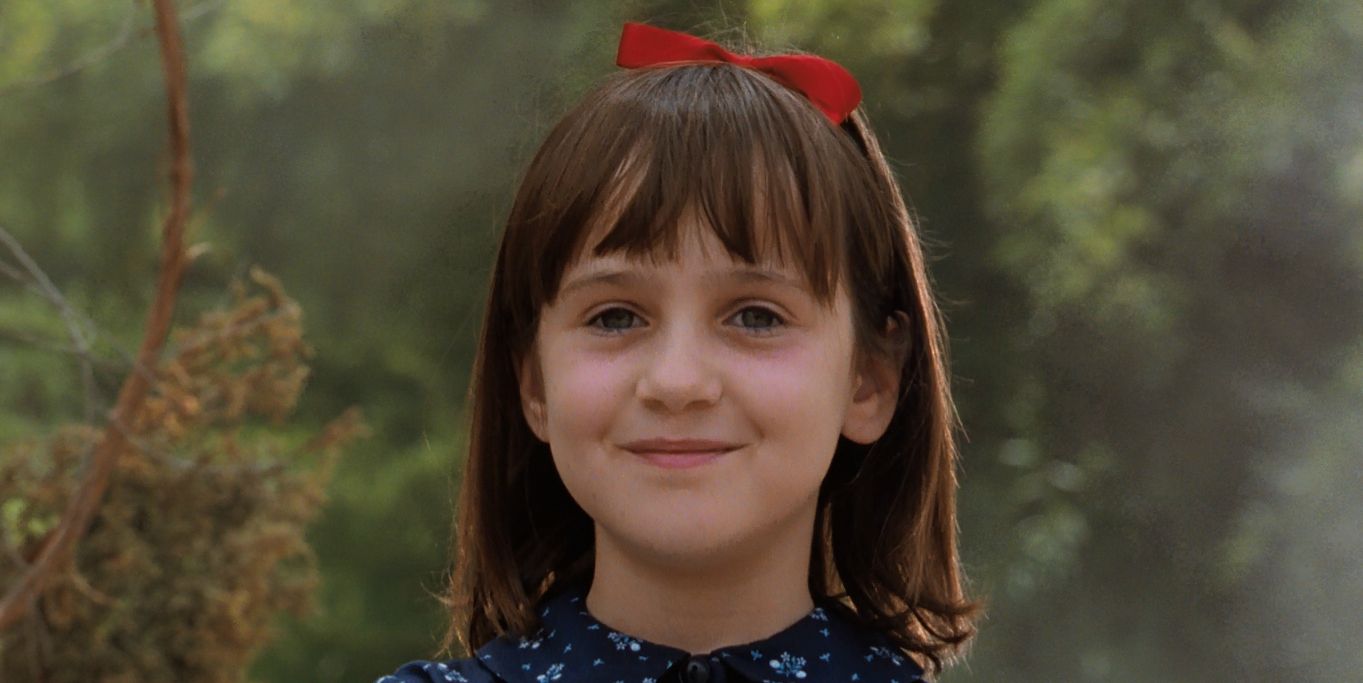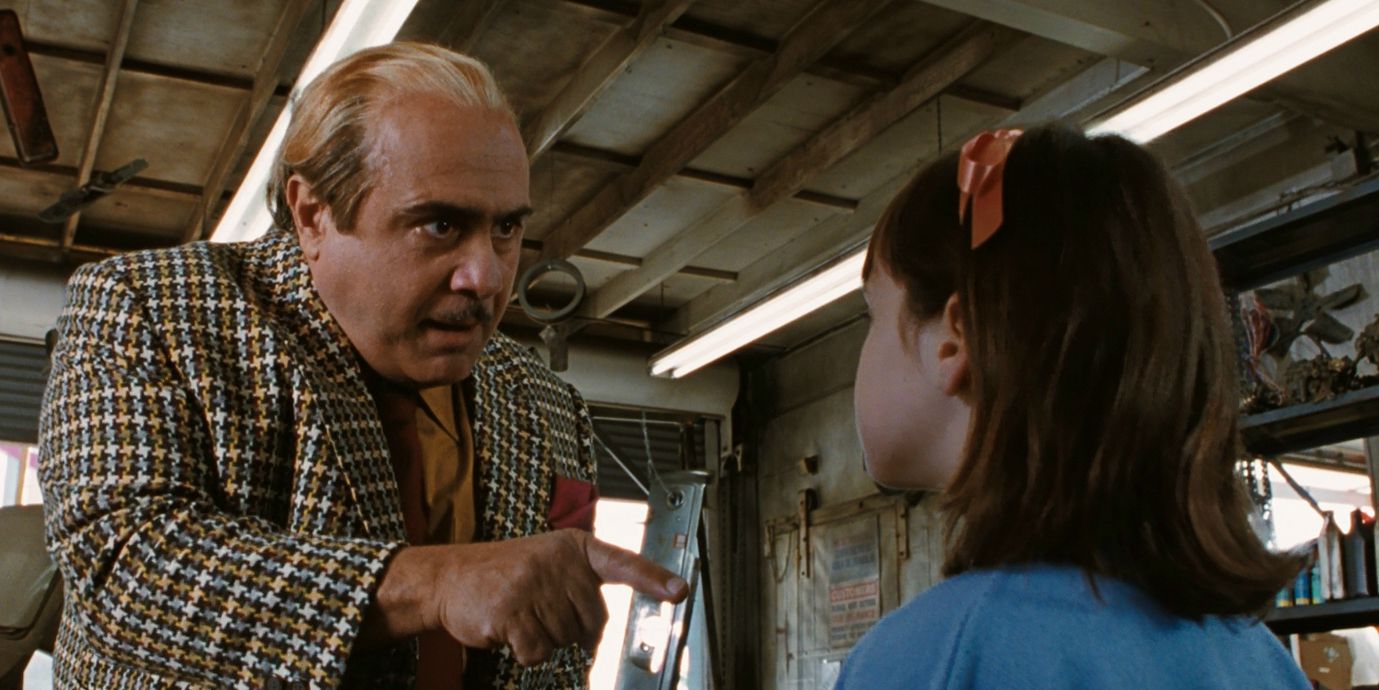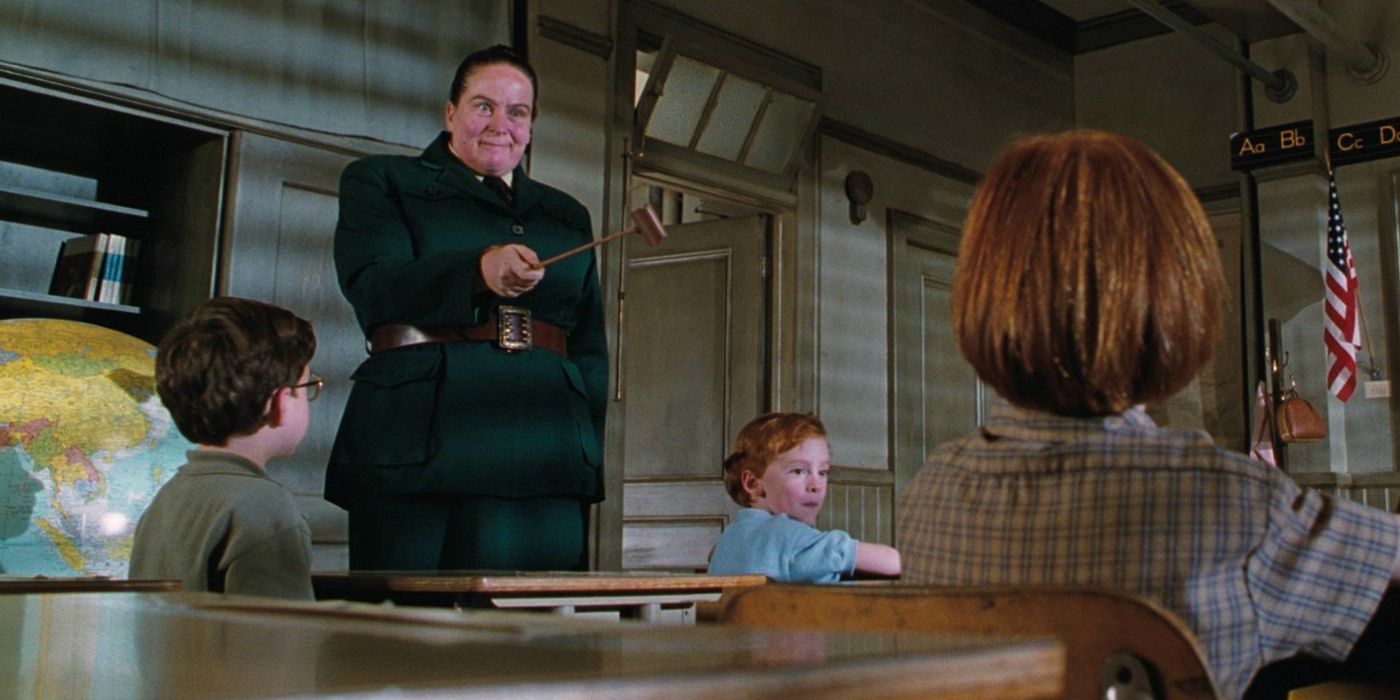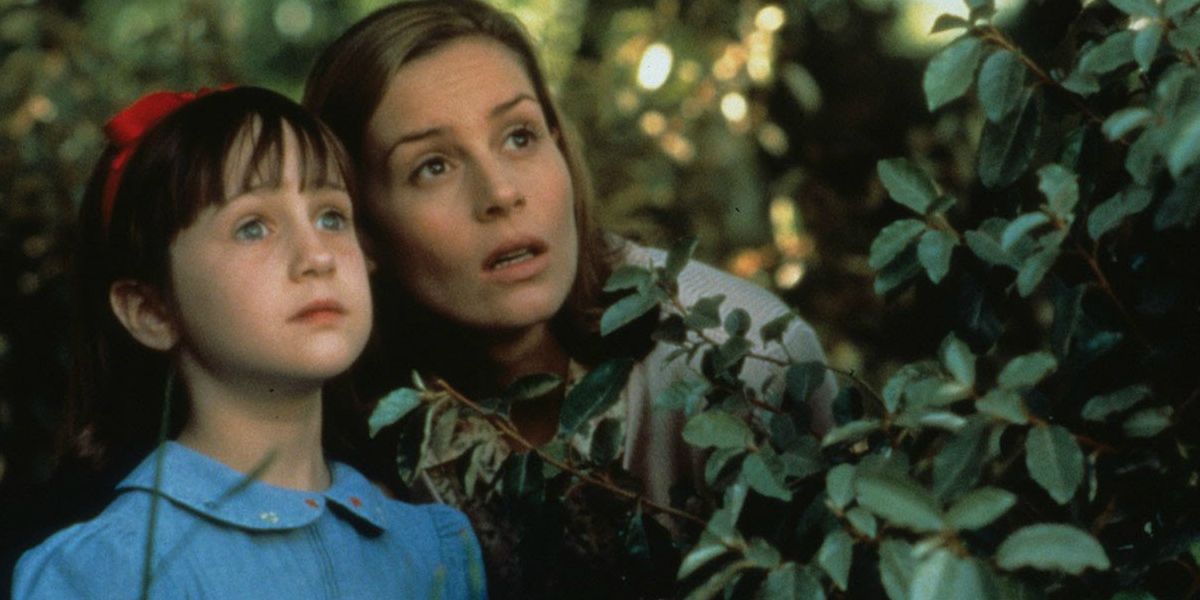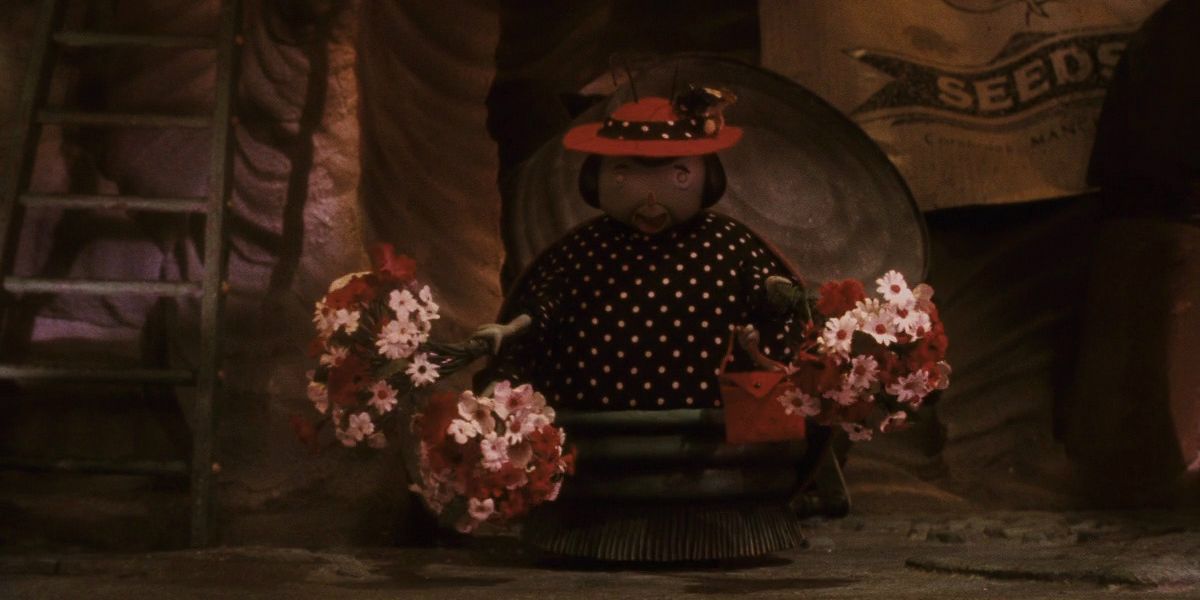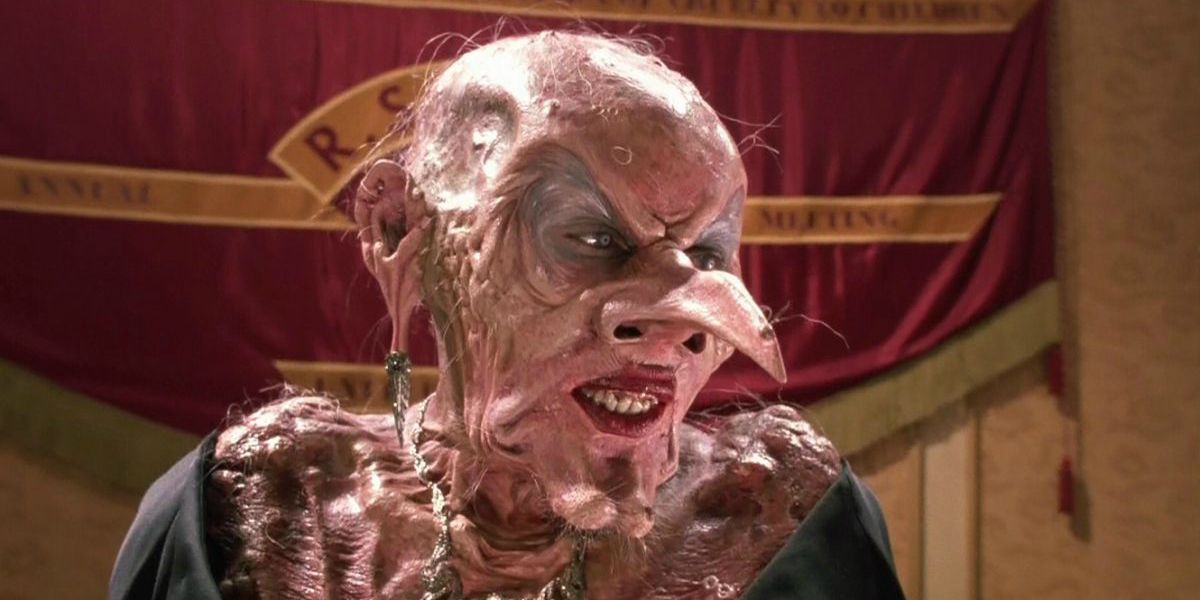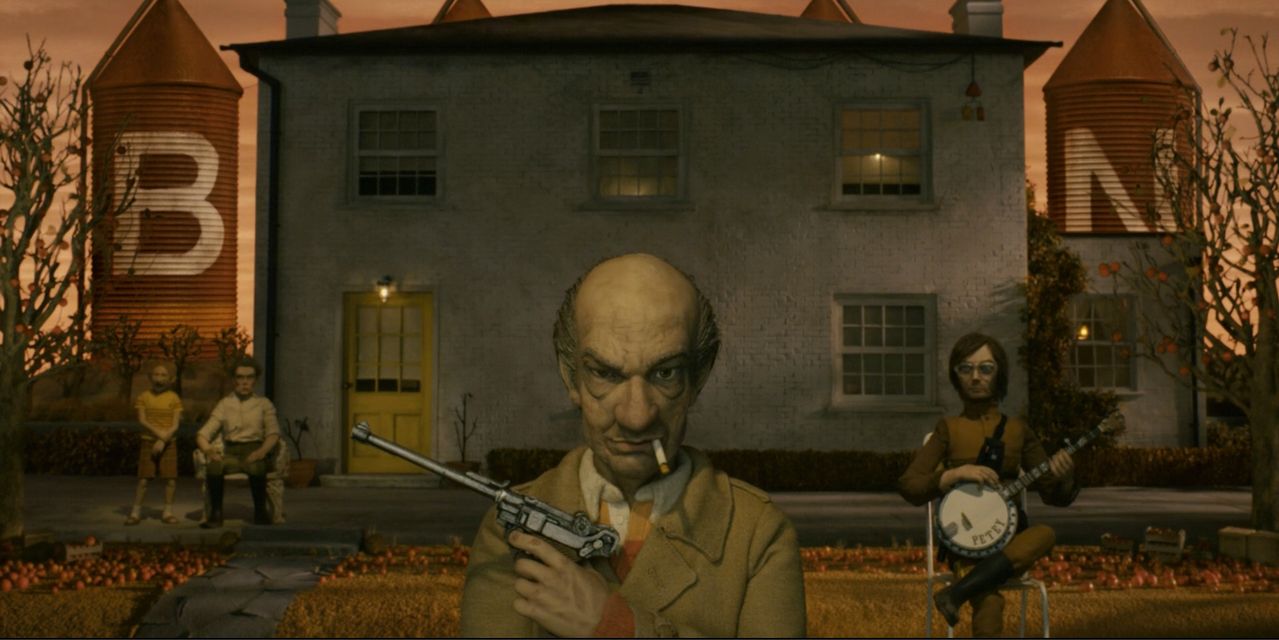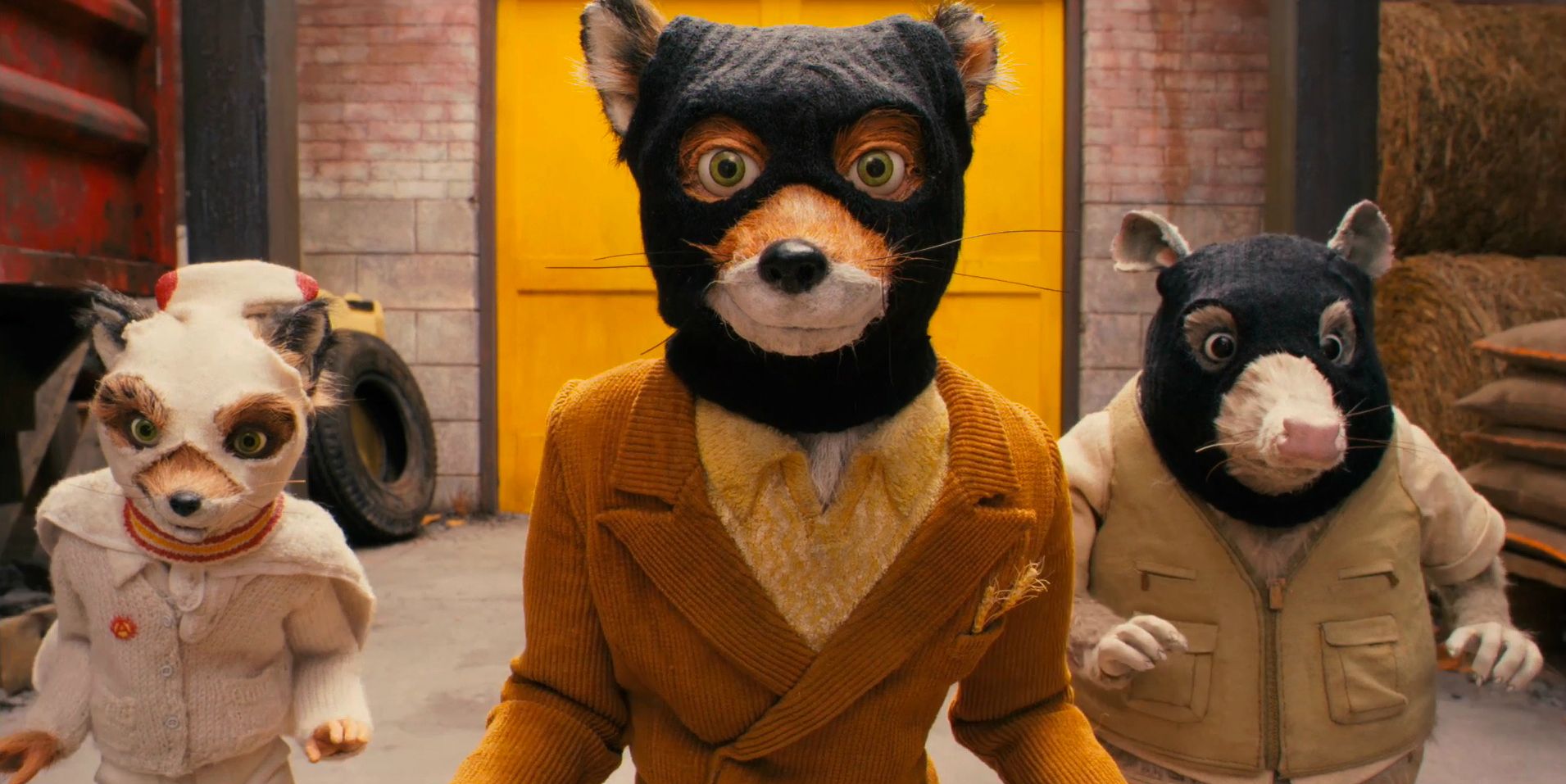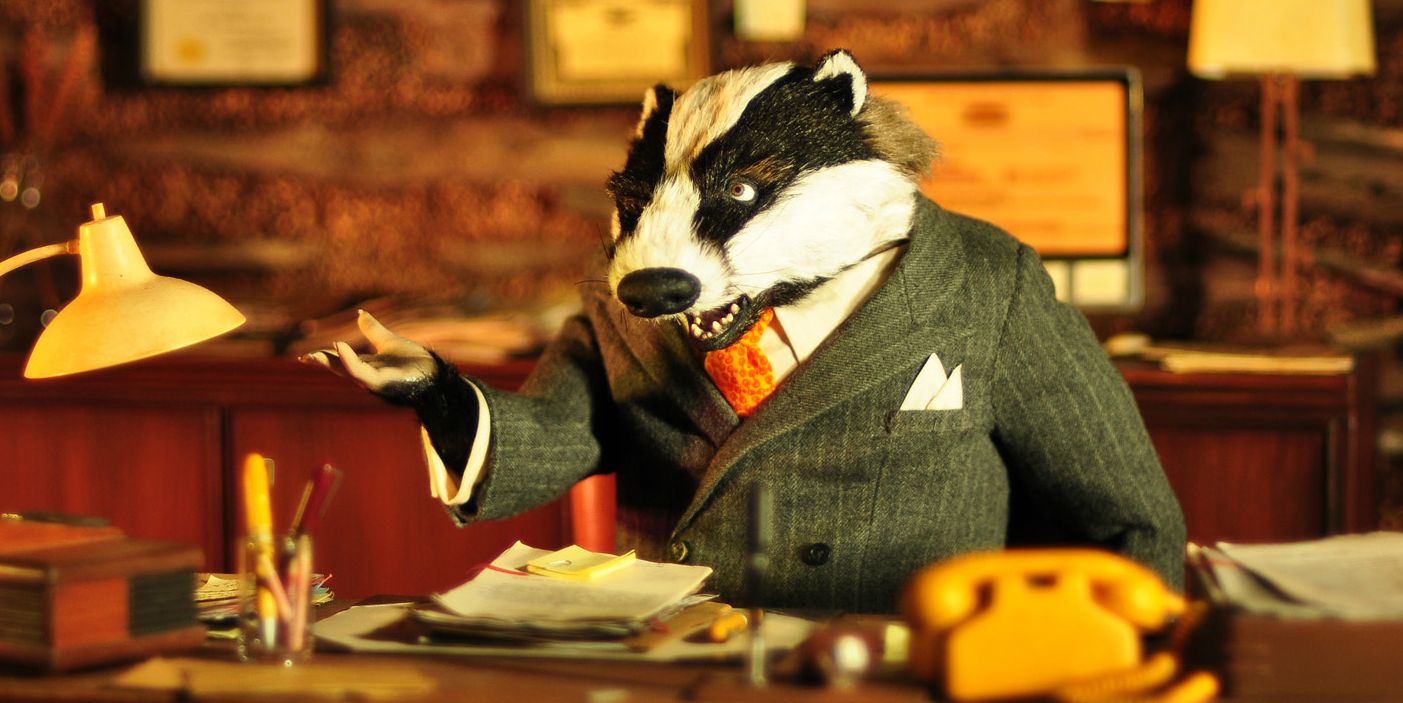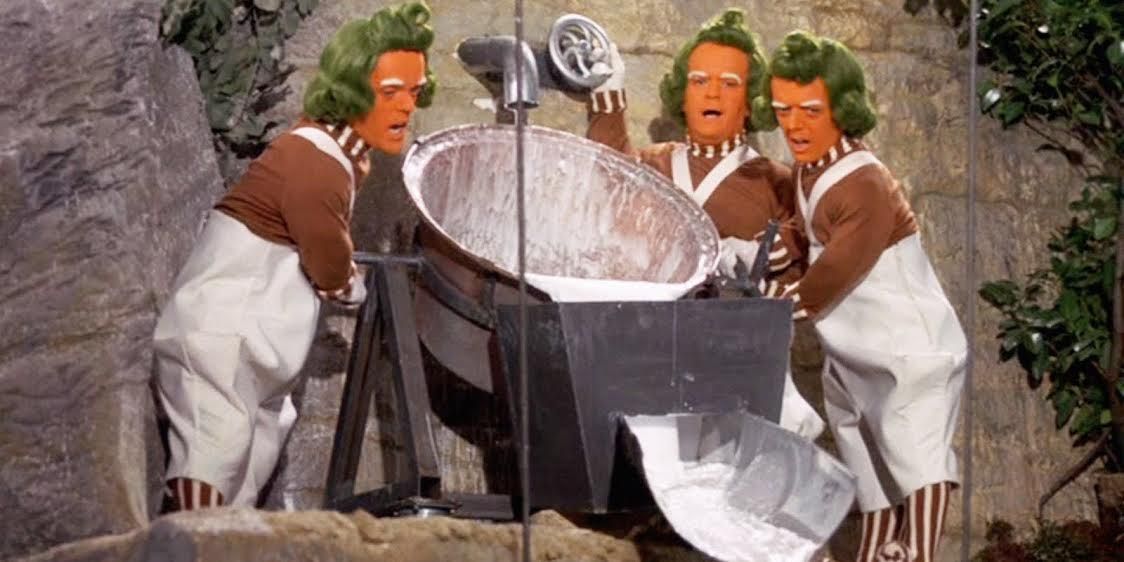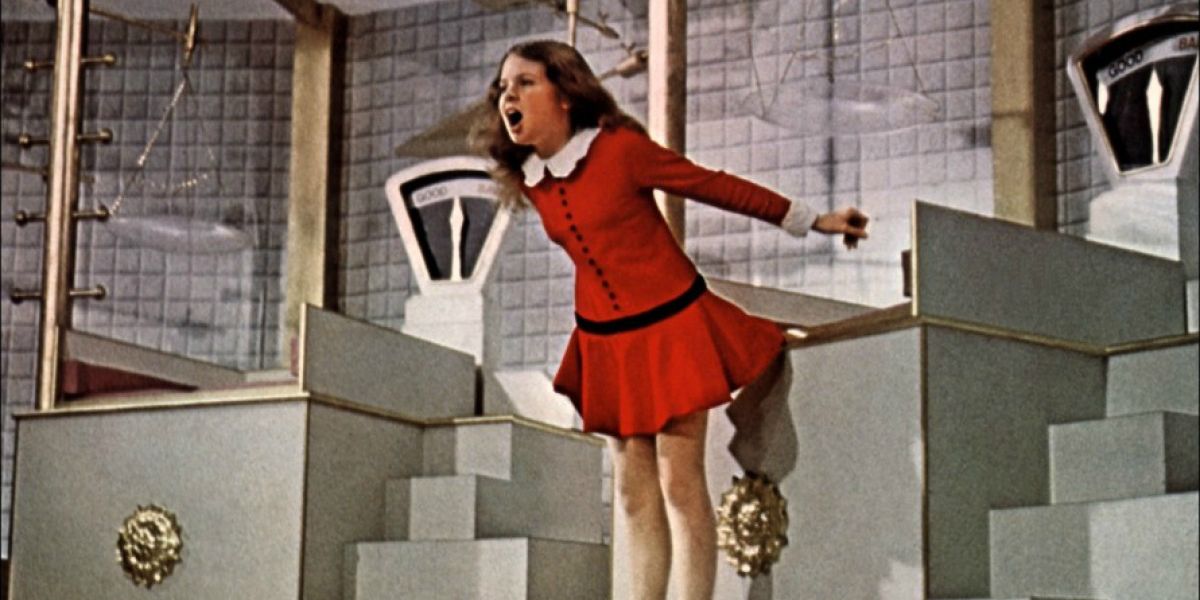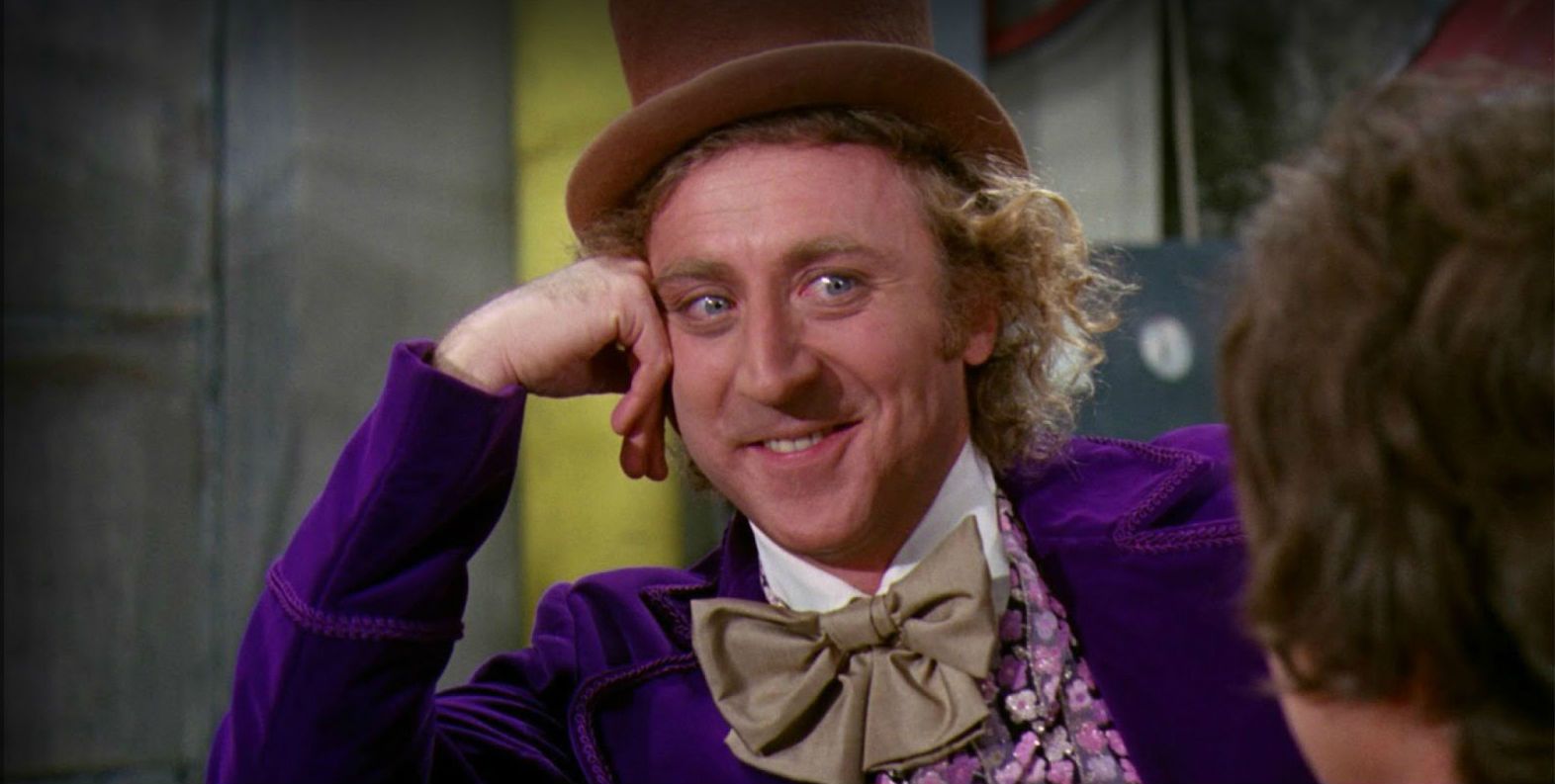For generations, Roald Dahl has been one of the most beloved children's book authors, introducing kids to the droll nature of British grotesquery, gallows humor, dry wit, word play and unforgettably eccentric characters. Dahl wrote books that never talked down to children and also struck a tone that suggested that it never would occur to the author to do so. A shelf full of Quentin Blake-illustrated Roald Dahl books is a must for any well-stocked children's library.
Like many authors whose work appeals to children, there have been a number of adaptations of Dahl's books. Most recently, Spielberg has taken a crack at adapting The BFG, and the result will appear in theatres on July 1. Unlike most such authors, the majority of these adaptations have been pretty good (even the much hated Tim Burton version of Charlie and The Chocolate Factory isn't nearly as bad as its reputation suggests) and the characters at their center have made it over to the big screen more or less intact.
Here are the The 15 Best Characters And Creatures In Roald Dahl Movies
15. Matilda
Matilda might be Roald Dahl's most enduring work. For all the pleasures of his books; the smooth patter of his prose, his keen eye for descriptive detail, his dark humor and sense of the macabre, the one quality that might be most easily overlooked, if only because it might seem too obvious, is his uncanny ability to assume a child's point of view. The details they focus on, the tangents of their imagination, the things they may find scary or repellent or fascinating.
Matilda, the bookish telekinetic who begins to do battle with the unjust adults of her world, is probably his best child character. Is there a lonely, bullied kid who read the book and didn't want her gifts? But Matilda is an interesting character before extraordinary things begin happening to her (a step that far too many YA authors skip) and Mara Wilson's portrayal in Danny DeVito's adaptation of Matilda manages to keep the character intact. (She's the only child actor you'll find on the list, as most of the movies overly sanitize their child protagonists). Her performance avoids many of typical child performance tics, and keeps the delicate balance of creating a character who both is and isn't as vulnerable as she appears.
14. Mr. Wormwood (Matilda)
Danny DeVito might at first seem an incongruous auteur to bring a work about a precocious child psychic to the screen. But DeVito always did choose dark subject matter as a director, making comedies about matricide, spousal murder, killing Barney, dramas about corruption and the death of the American dream, and, of course, playing Frank Reynolds through approximately 48 seasons of It's Always Sunny In Philadelphia. The point is that the man likes to go dark, and Dahl's work is, among other things, a childhood primer for adult misanthropy (this is a compliment).
DeVito not only directed Matilda, but played the role of the titular character's father, the unctuous Mr. Wormwood, a man so venal and of such petty tyranny that his daughter actually carries around adoption papers in the hopes that she will one day have the opportunity to use them. DeVito relishes the chance to play him as venal and crass as he can, venal and crass being much what DeVito was born to do as an actor, and it perfectly sets the black comic tone.
13. Trunchbull (Matilda)
If the all too human and recognizable Mr. Wormwood rests comfortably on one end of Dahl's spectrum of villainy, then the larger than life Trunchbull sits just as perfectly on the other. If Mr. Wormwood is kin to the bratty children and weak-willed parents who toured the chocolate factory along with Charlie, then Trunchbull is more in line with the Rhinosaurus who killed James's parents at the beginning of James and the Giant Peach. She's an overwhelming fact of nature, the unmovable object to Matilda's unstoppable force.
Between DeVito and Dahl, she is also gleefully grotesque. From her introductory scene, where she flings a girl from a second story window by her pigtails, she has the same over the top-level of villainy as a Looney Tunes character. Played by Pam Ferris, who is responsible for playing half of the formidable dowagers on the BBC, Trunchbull remains an indelible comic creation.
12. Miss Honey (Matilda)
Dahl's tone could get dark (if you're unfamiliar with his work for adults go ahead and read the short story "Piggy" - it's OK, we'll wait), which leads to the litany of depressingly predictable challenges to his work. The complaints of those who believe it's unsuitable for children as though children are anything but acutely aware of the capriciousness of the world, their own powerlessness in it and their resilience in the face of both.
But it's important to note that darkness was not all he offered. He would have been a dreary sort of writer if it were. And even in a gamut of tribulations as formidable as Matilda, there is Miss Honey waiting at the end of it. Dahl's fiction, like all great British fantasy fiction from Chesterton all the way down to Rowling, is at its heart a paean to domesticity, a passionate defense of coziness and home, it's what all his characters are seeking: warm safe burrows, peach pits in central park, factories where their families won't have to share a single room. In Matilda, home is Miss Honey, the character who offers Matilda the understanding and refuge that she so desperately needs. Played by Embeth Davidtz (whose career runs the gamut from Schindler's List to Army Of Darkness) she works remarkably well as the embodiment of home.
11. The Centipede (James and the Giant Peach)
Henry Selick's career is one of the most influential, beloved and frustrating in American animation. The fact that dream project after dream project has collapsed in the aftermath of the brilliant Coraline (seven years and counting) is the kind of fact that makes one wish that they'd hit the lottery so they could simply write the guy a check. But in the wake of the instantly iconic Nightmare Before Christmas, Selick was able to leverage his success into an adaptation of James and the Giant Peach.
The would-be ringleader of the insects James encounters inside the titular Giant Peach, the Centipede is the perfect example of the kind of character Selick loves to do. Focusing such a large chunk of the movie on a character who's mostly appendages seems like the stop motion animation equivalent of a dare (the fact that the Centipede isn't the only one is the equivalent of doing the dare drunk). But the bravado transfers to the character, who is cocky, belligerent and has personality to spare. (One would never guess that it's noted nebbish Richard Dreyfuss doing the voice.)
10. The Grasshopper (James and the Giant Peach)
The Grasshopper is the yin to the Centipede's yang in James and the Giant Peach. Here is a character so uptight that he wears an ascot AND a monocle. Once again, this is a prime example of Selick's ability to tell story through careful character design and animation. It's not that Simon Callow doesn't do a fine job of voicing the character, it's that Selick and his crew of animators almost make the job superfluous. Everything you need to know about the character is there before he opens his mouth (er mandible).
James and the Giant Peach might not be a perfect film -- some of the songs are a bit over long and treacly, and the live-action segments betray the discomfort of the man who made Monkeybone -- But with animation like this, which would be a career best for almost any other filmmaker, it's easy to overlook a lot.
9. Miss Spider (James and the Giant Peach)
With Miss Spider, we have another of Dahl's surprisingly numerous nurturers. If the Grasshopper and the Centipede are examples of design expressing character, then the spider is something a bit more interesting; a design that contradicts its character. Miss Spider's design is filled with wonderfully subtle sinister touches (you've got to love the double pupils in each eye) as well as some big ol' obvious ones (white pancake makeup face AND a black beret, in case you missed it). It's no wonder that the character has become a favorite of fan artists and cosplayers, despite the relatively overlooked status of the film.
It's all an interesting choices for what amounts to the closest the book and film has to a mother figure. But like Dahl's books themselves, Miss Spider is a reminder that children's literature doesn't have to be sanitized and safe. Sometimes, kids are attracted to things that are a little dark and unusual.
8. The Ladybug (James and the Giant Peach)
Dahl's work lends itself to animation, James and the Giant Peach isn't the only animated adaptation of Dahl's work, it's not even the only stop motion animated film on its list (and The BFG is one of those modern films that muddies the water between live action and animation so much as to barely mark a difference). What's interesting isn't that Dahl's work lends itself to exaggeration and caricature, but how many different kinds it can sustain. Selick's vaguely mechanical style differs greatly from the cuddly, expressive drawings of Quentin Blake that defined Dahl's work for so many. And yet, both seem like valid expressions of Dahl's work.
The two do find a bit of common ground in the character of the Ladybug, if only because even Henry Selick couldn't quite find a way to make a Ladybug dark and menacing. Voiced by Jane Leeves, she's one of the most overtly welcoming figures in the film and Dahl's work as a whole.
7. The Grand High Witch (The Witches)
If there's one Roald Dahl adaptation that's slipped through the cracks, it's probably Nicholas Roeg's excellent adaptation of The Witches, the story of a child who stumbles upon a convention of witches and their plans to kill off most of the children in the world. The film was something of an outlier for Roeg, who made movies of intense psychology and surrealist style. He was the guy you went to for stories about a man haunted to death by his grief (Don't Look Now), a space alien being destroyed by Earth culture (The Man Who Fell to Earth, starring David Bowie as the alien, of course), or sexual self-destruction (Bad Timing), none of which scream "kid friendly."
Then again, Dahl never really cared about being "kid friendly" either, so maybe it was a perfect match after all. Though less narratively fragmented than Roeg's other work, and with an ending that softens Dahl's, The Witches is a thoroughly effective movie, from its eerie understated beginning to its superlative practical effects by The Jim Henson Company.
Equal credit must go to Anjelica Huston, who manages to radiate menace through all those layers of latex. She plays the Grand High Witch with a malevolent glee that perfectly suits the story. The Witches is a film that thoroughly deserves to be rediscovered.
6. Bean (The Fantastic Mr. Fox)
As this list has shown, Dahl's adaptations certainly did not lack for great villains, and yet Mr. Bean, "possibly the scariest man alive" is the best when it comes to screen versions. Why? The leader of the farmers out to kill Mr. Fox in Wes Anderson's Fantastic Mr. Fox is much less flamboyant than The Grand High Witch or Trunchbull, and yet everything about him, from his bland face to his gaunt frame, to Michael Gambon's performance of understated iciness and control, makes him positively magnetic. Mr. Bean (but not that Mr. Bean) is a figure of terrifying control (making the one time he loses it even more striking).
It doesn't hurt that he has fantastic taste in music (this is a Wes Anderson film after all), choreographing his assault on The Fox home to "Street Fighting Man," and hiring Jarvis Cocker as his manservant. His decision to don Mr. Fox's tail as a neck tie one-ups Dahl as far as morbid detail goes. Maybe one can't quite isolate what makes Mr. Bean such a great villain, but in a film full of grotesque bad guys, he even bests Willem Dafoe (who, for all intents and purposes, is reprising his Bobby Peru character from Wild At Heart).
5. Mr. Fox (The Fantastic Mr. Fox)
Being a Wes Anderson film, the director's take on the Mr. Fox was less "Fantastic" and more "Existentially Troubled." Unsatisfied by his career, unable to connect with his son, alienated from his community and saddled with an intense phobia of wolves, Mr. Fox was just a drinking problem and a montage away from being the typical lead in an indie movie. A far cry from Dahl's slightly one-dimensional swashbuckler.
So why does such a morose figure make the list? Because Clooney's Mr. Fox, honey voiced, insinuating, urbane, slightly neurotic, and ultimately good-hearted, is such a perfect reflection of the film he's in. Anderson's film is basically the greatest diorama ever constructed. Like all his films, it's an ode to the joy of details, and Clooney is the ideal guide through it. It's arguably Anderson's lightest film, yet the lead characters' dissatisfaction undercuts it with his trademark Autumnal melancholy. What would an Anderson film be without it? Why, something like a fox without a chicken in its teeth.
4. Mr. Badger (The Fantastic Mr. Fox)
Well, he's played by Bill Murray... and really, that could just be the end of the entry right there, couldn't it? Much like Dahl, Murray has a distinct, slyly subversive sense of humor that translates surprisingly well to children (and in an earlier era he would have made a fantastic Mr. Fox indeed).
As Mr. Badger, Mr. Fox's long-suffering, rarely heeded attorney, Murray is playing something of a straight man role, which doesn't prevent him from walking away with several of the film's funniest scenes, including the initial disagreement over whether or not to purchase the offending tree that kicks the whole movie into motion. Accusations about who is cussing with who escalate until both animals (fox and badger) drop their civilized veneer and engage in a growling tussle, only to both seem rather alarmed they have done so when their genteel impulses kick back in. It's the film in microcosm: instinct versus ideal, freedom versus responsibility, and Murray's exhausted "OK" that ends it never fails to make me laugh.
3. Oompa Loompas (Willy Wonka and the Chocolate Factory)
If there are a group of minions more often or thoroughly parodied than The Oompa Loompas, they do not spring directly to mind ("Who are those horrible orange creatures over there?" "Why those are the Grunka Lunkas! They work here in the Slurm factory!" "Tell them I hate them!"). But that's partly because they seem so perfectly formed. Like the best of Dahl's work, there's a feel that the Oompa Loompas were always there, just waiting to be discovered.
Odd and just a little off (surely, Farnsworth can't be the first to have that reaction to them). The way they, like Wonka, seem to take the fates of their children just a little bit too in stride - like did those songs really just come off the tops of their heads? They seem like they would be equally comfortable in a dream or a nightmare, and isn't that the great thing about Willy Wonka and The Chocolate Factory? The way it slips so deftly between the two? If you are wise, you'll listen to them.
2. Veruca Salt (Willy Wonka and the Chocolate Factory)
At first it might seem as though choosing the worst of the awful children that Willy Wonka delves karmic justice out too would be a fool's errand, like trying to choose between the flu and crippling case of food poisoning. But while the other children's flaws can be chalked up to normal human failings, like gluttony (Augustus), pride (Violet), or immaturity (Mike), Veruca is the only one who failing is pure nastiness. She's the only one of the children who is already rich, who has no love of candy for its own sake. The golden ticket is just another thing to acquire and lord over people. Though Dahl's prose was mighty acidic, those who practiced malice for its own sake rarely lasted long or fared well in his fictional universes, and the queen brat Veruca was no exception.
Plus, she inspired one of the most underrated bands of the grunge era. So, you know, she's got that going for her.
1. Willy Wonka (Willy Wonka and the Chocolate Factory)
Beloved by generations of children and stoners alike, it's not hard to see why Willy Wonka has lasted as a cultural icon. Like all of the great trickster gods, Willy Wonka is a walking contradiction, a symbol of both anarchy and fierce moral order, of whimsy and logic, benevolence and menace. Or if that's too pretentious for you, you can chalk his popularity up to the fact that he wears a suit of crushed purple velour and a top hat and it takes some serious chops to pull that look off.
This version character is, of course, as much Gene Wilder's creation as Dahl's. The beloved actor's signature role and his tone of courtly, off kilter warmth is a large part of why the character has stayed in the popular conscious for as long as he has (think of how quickly Johnny Depp's adenoidal OCD case of a Willy Wonka has been forgotten). He's the perfect untrustworthy tour guide, all zen calm until he's not. As unpredictable as the "There's no earthly way of knowing/Which direction they are going... There's no knowing where they're rowing..." sequence in the middle of a G-rated kid's film.
-
Can you think of any other Roald Dahl characters that should have made this list? Let us know in the comments!

